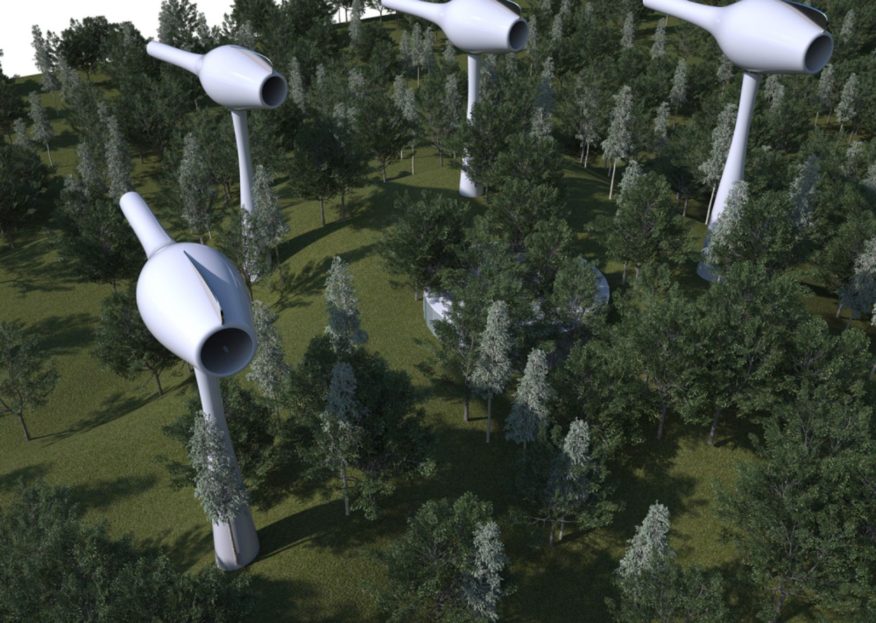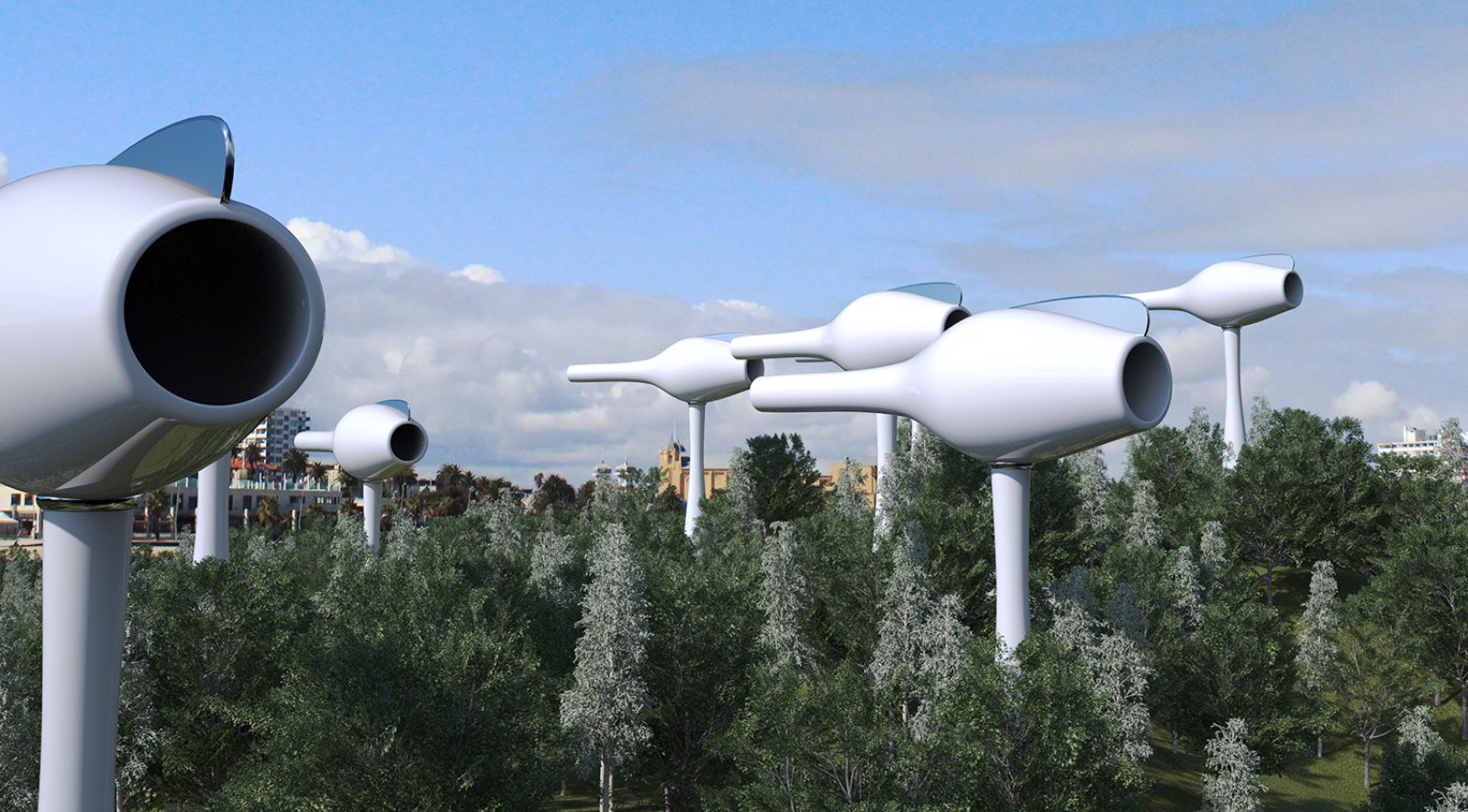
An electrical engineer in Vancouver has designed a new wind energy concept that eliminates many of the problems associated with today’s mammoth turbine towers—and it plays music. Shaped like a hollow champagne bottle, Seaflute uses Direct Wind to Electricity Generator (D-WEG) technology to convert wind energy directly into electricity. No moving parts. Minimal energy loss.

The proposal, a submission to the 2018 Land Art Generator design competition for Melbourne, responds to the following question posted by Aziz, Iman, and Puya Khalili — the family team behind Ionics Research + BETTER in Vancouver, Canada: What if we could break down each level of energy transformation from wind to electricity such that there would be a direct conversion of wind’s kinetic energy into electricity?

Aziz, the father, says each moving part of a conventional wind turbine — including the propeller, gearbox, and generator — uses up some of the energy it produces. Meanwhile, he notes, that lost energy turns into heat, friction, noise, or wear, making the towers expensive, inefficient, and high maintenance. To improve upon the design, potentially creating a less expensive device that could be wildly efficient at converting energy, Aziz and Puya turned to aerodynamics, electrostatics, and electromagnetics.

Seaflute’s shape is integral to its function, according to Aziz. Wind enters the narrow opening of the bottle-shaped module, creating a vacuum at the back that sucks out interior air. More air then rushes in to fill up this space, creating a constant, forceful flow of air from the design’s opening to the back, applying the same physics that enables airplane wings to lift off (Bernoulli’s Effect).

When that air passes through Seaflute’s narrow neck, which is equipped with an Electrostatic Ion Generator, it creates a long stream of charged electrons, or an electron cloud. This charged cloud then encounters the module’s Ferromagnetic core, which uses induction to generate an ongoing electrical current. The current is then captured, regulated, and sent directly as a DC current to lithium batteries. By converting ions into electricity, the design mitigates the need for moving parts and attendant energy losses, producing zero harmful emissions in the process. Source and images Courtesy of Land Art Generator.

